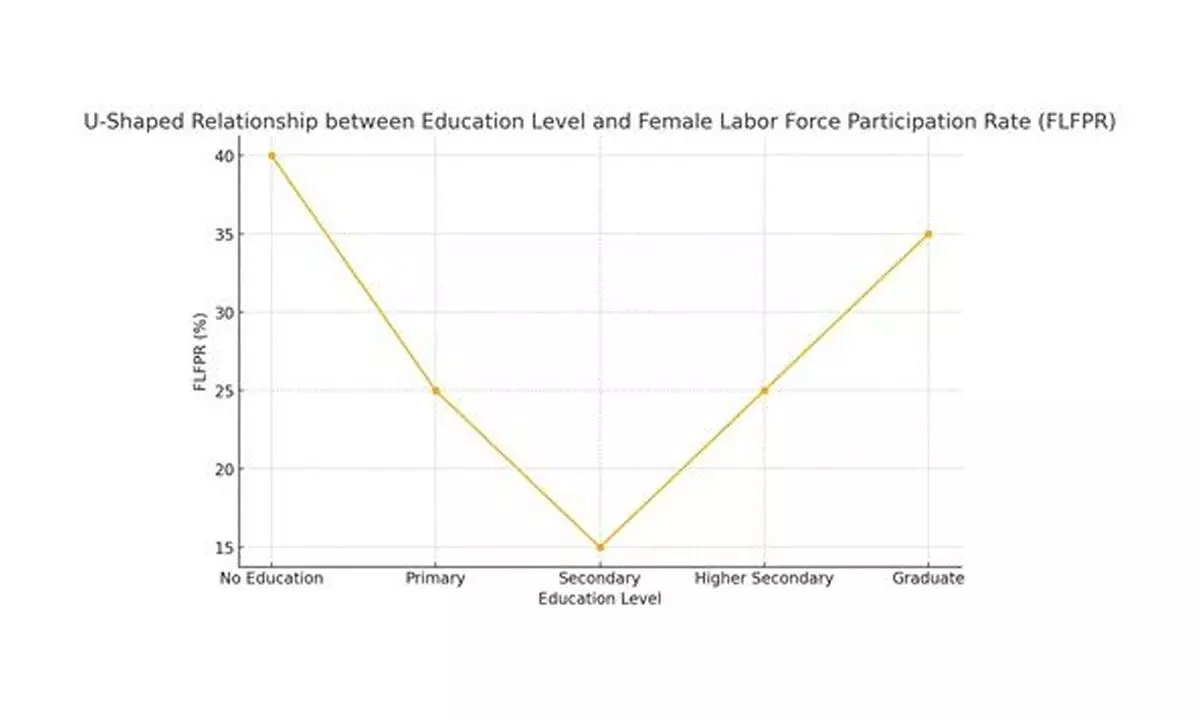Just In
A Rising Tide of Female Participation


As more women join India’s workforce, the country stands on the brink of a transformative economic shift that embodies the spirit of inclusivity and opportunity.
As more women join India’s workforce, the country stands on the brink of a transformative economic shift that embodies the spirit of inclusivity and opportunity. As women step into roles across sectors—be it technology, healthcare, education, or manufacturing—they bring fresh ideas, skills, and dedication that fuel economic growth and enhance workplace dynamics.
Unstoppable rise
Between 2017-18 and 2023-24, India recorded a remarkable increase in the Female Labor Force Participation Rate (LFPR) and Work Participation Rate (WPR) for women, coupled with a drop in the female unemployment rate. This shift speaks not only to economic progress but also to India’s drive toward creating an equitable, vibrant labor market where women play a leading role in shaping the nation’s future.
Female work participation rate (WPR) has nearly doubled, reflecting a powerful wave of women entering various sectors of the workforce. This shift aligns with a similar upward trend in the female labor force participation rate (LFPR), showcasing the growing number of women actively seeking and securing employment. Additionally, a notable decline in the female unemployment rate signals an increase in job availability, with women capitalizing on these opportunities, reflecting both enhanced employment access and growing job satisfaction among women.
What’s driving the change?
The transformation in female workforce participation is fuelled by several significant factors, including educational advancements, structural shifts in India’s economy, and improved measurement in labour data. One of the most notable drivers is educational advancement, which has created a U-shaped trend in the female labour force participation rate (LFPR). As women pursue education, their participation in the workforce reflects this U-shaped curve. Women with lower levels of education often enter the workforce out of necessity, filling roles in informal or lower-wage sectors. At the opposite end, women with advanced degrees secure professional careers, resulting in higher LFPR at both low and high ends of educational attainment. This curve reveals a dip in workforce participation at the mid-level education (secondary level) but a rise as women achieve higher qualifications. The pattern underscores the importance of advanced education in empowering women to enter meaningful careers, often with better financial stability and job satisfaction.
Investing in higher education for women, therefore, emerges as a strategic approach to unlocking the full potential of the female workforce. By promoting educational attainment, society can ensure that more women not only enter the workforce but also thrive in roles that fully utilize their skills and capabilities.
Structural shifts in India’s economy also play a significant role in enhancing female participation. As the economy has expanded, growth sectors like services, technology, and manufacturing have created new opportunities beyond traditional agriculture. These sectors are particularly appealing to women and offer diverse job roles that were previously limited, broadening the landscape for female employment.
At the heart of India’s growth
The economic contributions of women not only add depth to India’s labour force but also help diversify perspectives in various industries, stimulating fresh ideas and approaches. This shift is more than just numbers; it signifies a strengthening economy that is better equipped to face global competition and adapt to changing economic trends.
As more women find employment opportunities, the nation witnesses a steady march towards gender equality. Women’s increasing financial independence creates a ripple effect that uplifts families and communities, bringing about meaningful social change. When women contribute financially to their households, families are often able to invest more in education, access better healthcare, and explore new opportunities. This empowerment is transformative. Financially independent women are more likely to make decisions that benefit their children’s futures, and communities gain when women have the resources and influence to create lasting positive impacts. The shift towards a more equitable workforce enriches the social fabric, setting a foundation for inclusive growth.
With India’s population growth expected to slow in the coming years, women’s participation in the workforce will be vital to meeting the country’s future labor demands. Encouraging more women to enter the workforce is essential for sustaining India’s economic momentum. As the demand for skilled labor rises and the working-age population shrinks, a gender-balanced workforce will be crucial to maintaining productivity and addressing future economic challenges. By integrating more women into the labor market, India can ensure a steady supply of skilled professionals to support its diverse industries, from technology to healthcare and beyond. This approach not only prepares India for demographic shifts but also reinforces the country’s economic foundation, enabling it to thrive in a competitive global landscape.
As India’s women continue to rise, so too does the nation, driven by the energy, ambition, and talent of its people. This is more than an economic shift—it’s the dawn of a new era of empowerment and opportunity for all.

© 2024 Hyderabad Media House Limited/The Hans India. All rights reserved. Powered by hocalwire.com






